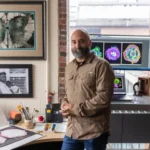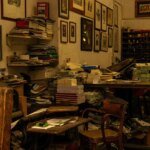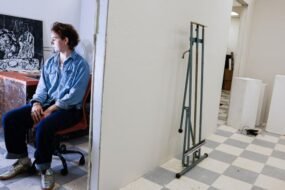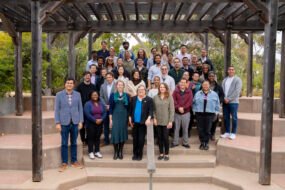
Visitors to the planned exhibit will answer brief survey questions about the artworks they see, to help emphasize that scientific data can be interpreted in different ways.
Barresi hopes the exhibit will spark deeper awareness of the complexities of determining when life begins. For instance, he notes, few people may realize that the anatomy of the human heart is not complete until birth, when a baby’s first breath closes a flap and divides the two atria.
His new outreach project, which is supported by a National Science Foundation grant, “is an opportunity to do something different with data,” Barresi says.
“Fortunately, my field lends itself to the visual arts,” he adds, with a smile.
Barresi’s office in Sabin-Reed Hall is a testament to that idea, filled as it is with paintings, posters, and sculptures. On an elevated stand, a computer screen displays photographs of human embryo cells in vivid hues. At a nearby desk, Barresi has begun work on a watercolor painting of those same images. Next will come an oil pastel, a ceramic mosaic and, finally, a metal sculpture.
By comparing the artworks to photographs of embryos at different stages, visitors to the exhibit will be encouraged to reflect on “how they interact with and interpret scientific information and how much information is lost the farther you get from the original source,” Barresi says.
If the traveling art project goes well, he hopes to partner with fellow scientist-artists in communicating about other complex issues such as neurodiversity, evolution, and climate change.
”When we think about policy on these issues, do we truly understand the science?” Barresi asks. “Science communication is more important now than ever.”











